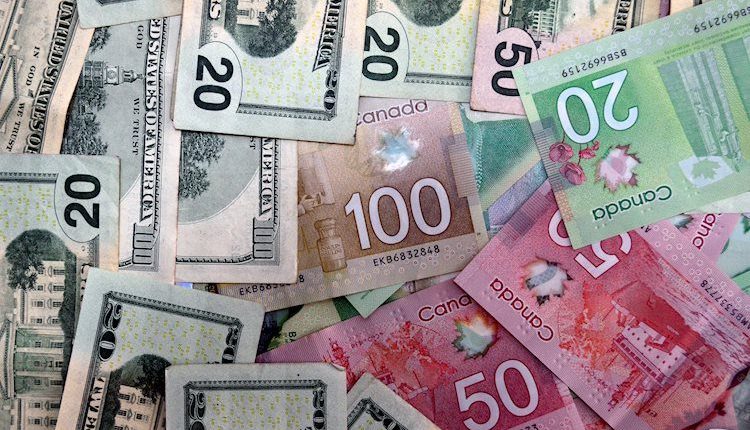- Canadian Dollar turns bearish as broader markets go risk-off.
- Canada Manufacturing PMI declined on Monday to 47.5.
- Rest of the week to be determined by US Dollar flows heading into another NFP Friday.
The Canadian Dollar (CAD) has fallen 0.70% against the US Dollar (USD) in Monday trading as broader market risk appetite turns south and jittery investors pile into the USD. The USD/CAD is rounding into the midpoint of the US trading session just south of 1.3680.
The Canadian Manufacturing Purchasing Manager Index (PMI) declined from 48 to 47.5 on Monday, further draining support for the Loonie and helping to prop up the USD/CAD pair even higher. Next up for the CAD on the economic calendar will be Thursday’s Ivey PMI for September, which is forecast to decline from 53.5 to 50.8.
Forex Today: US Dollar shows its strength, RBA to keep rates unchanged
US Dollar Index climbs to 107.00, claims eleven-month high as market sentiment extends risk-off flows
Daily Digest Market Movers: Canadian Dollar extends declines against Greenback, USD/CAD testing 1.3675
- Risk appetite has soured further on Monday, driving the US Dollar Index (DXY) higher across the entire market.
- The CAD is slipping as Greenback gains couple neatly with a backslide in Crude Oil prices, kicking the legs out from underneath CAD support.
- Oil-dependent CAD is finding little support in markets as Canadian PMIs continue to worsen, exacerbating concerns about a slowdown in the Canadian domestic economy.
- Market flows and US data are set to drive the USD/CAD into the mid-week with little of note on the economic calendar for CAD traders until Thursday’s Ivey PMI.
- Canadian labor data on Friday is set to be overshadowed by the US Non-Farm Payrolls (NFP).
- DXY flows are being guided by US Treasury yields, and currency traders will want to keep an eye on bond markets to determine directional shifts in the US Dollar.
- USD/CAD traders will also want to watch Wednesday’s US ISM PMI figures on Wednesday
Technical analysis: Canadian Dollar declines against the US Dollar, USD/CAD heading for 1.3700
The USD/CAD pair is trading into 1.3675 on Monday, climbing over a hundred pips from the day’s bottom and extending the topside run that started from Friday’s lows near 1.3420.
The USD/CAD has climbed over 1.8% in two trading days and is poised for further gains as the pair shakes loose from recent bearish momentum.
September’s swing low into the 1.3400 handle saw technical support arrest declines and spark a reversal from the 200-day Simple Moving Average (SMA) currently sitting on the high side of 1.3450, and the US Dollar’s broad-market rebound has sent the USD/CAD pair back into September’s peaks near 1.3700.
USD bulls will be looking to gather enough momentum to make a decisive break of 1.3700, while CAD bidders will be looking for a way to send the pair back into the 34-day Exponential Moving Average (EMA) just north of 1.3500.
Canadian Dollar FAQs
The key factors driving the Canadian Dollar (CAD) are the level of interest rates set by the Bank of Canada (BoC), the price of Oil, Canada’s largest export, the health of its economy, inflation and the Trade Balance, which is the difference between the value of Canada’s exports versus its imports. Other factors include market sentiment – whether investors are taking on more risky assets (risk-on) or seeking safe-havens (risk-off) – with risk-on being CAD-positive. As its largest trading partner, the health of the US economy is also a key factor influencing the Canadian Dollar.
The Bank of Canada (BoC) has a significant influence on the Canadian Dollar by setting the level of interest rates that banks can lend to one another. This influences the level of interest rates for everyone. The main goal of the BoC is to maintain inflation at 1-3% by adjusting interest rates up or down. Relatively higher interest rates tend to be positive for the CAD. The Bank of Canada can also use quantitative easing and tightening to influence credit conditions, with the former CAD-negative and the latter CAD-positive.
The price of Oil is a key factor impacting the value of the Canadian Dollar. Petroleum is Canada’s biggest export, so Oil price tends to have an immediate impact on the CAD value. Generally, if Oil price rises CAD also goes up, as aggregate demand for the currency increases. The opposite is the case if the price of Oil falls. Higher Oil prices also tend to result in a greater likelihood of a positive Trade Balance, which is also supportive of the CAD.
While inflation had always traditionally been thought of as a negative factor for a currency since it lowers the value of money, the opposite has actually been the case in modern times with the relaxation of cross-border capital controls. Higher inflation tends to lead central banks to put up interest rates which attracts more capital inflows from global investors seeking a lucrative place to keep their money. This increases demand for the local currency, which in Canada’s case is the Canadian Dollar.
Macroeconomic data releases gauge the health of the economy and can have an impact on the Canadian Dollar. Indicators such as GDP, Manufacturing and Services PMIs, employment, and consumer sentiment surveys can all influence the direction of the CAD. A strong economy is good for the Canadian Dollar. Not only does it attract more foreign investment but it may encourage the Bank of Canada to put up interest rates, leading to a stronger currency. If economic data is weak, however, the CAD is likely to fall.
Read the full article here

